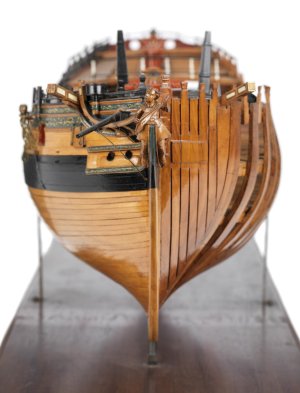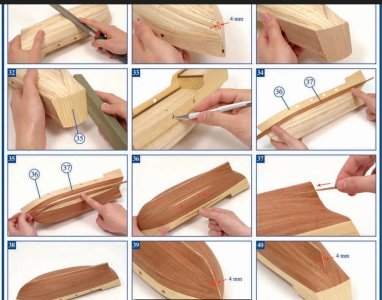- Joined
- May 7, 2025
- Messages
- 84
- Points
- 78

Hi, fellas. Thanks for having me. I’ve always wanted to build wood 18th century war ships. I just retired so now I have the time to invest in a hobby. For my first ship I chose OcCre’s Albatros. I chose this model as it seemed like a good kit to learn the skills I’m going to need. My goal is to eventually build a museum quality ship of the line. We’ll have to see how steep the learning curve is before I can build something as complicated as that.
I’ve just started the planking. The first plank was inadvertently placed too low. When I plank the starboard side I’ll make a better effort to place the first plank in the middle. The instructions showed planking from the middle up, but I was concerned about the top planks being at an angle, so after that first plank was placed I started planking from the top down. On the second planking I’ll place a plank on the port side then one at the same location of the starboard side. I wanted to plank the port side first then the starboard side on the first planking to use it as a learning tool. As you can see the planks look a little ‘wavy’ toward the bow (prow?). On my next model I’ll pay more attention to the bulkheads.
Any advice or criticism is welcome.
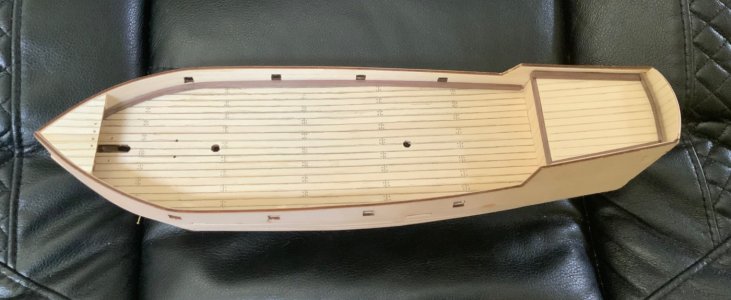
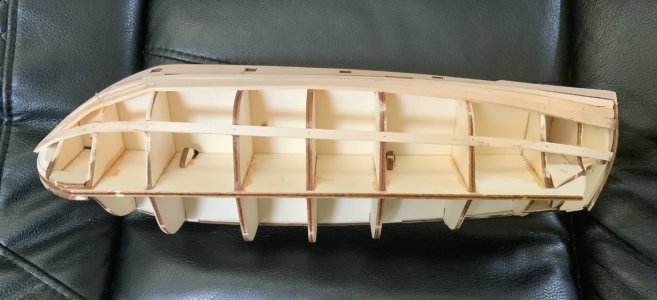
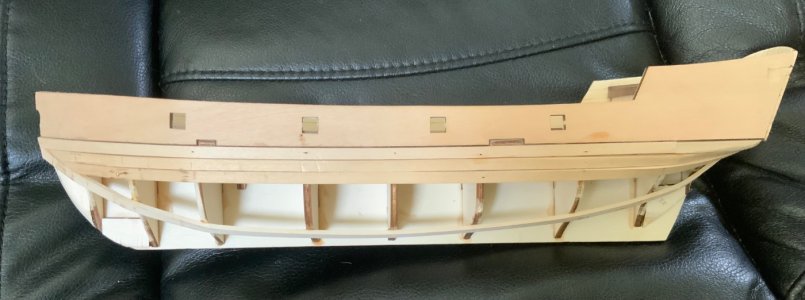
I’ve just started the planking. The first plank was inadvertently placed too low. When I plank the starboard side I’ll make a better effort to place the first plank in the middle. The instructions showed planking from the middle up, but I was concerned about the top planks being at an angle, so after that first plank was placed I started planking from the top down. On the second planking I’ll place a plank on the port side then one at the same location of the starboard side. I wanted to plank the port side first then the starboard side on the first planking to use it as a learning tool. As you can see the planks look a little ‘wavy’ toward the bow (prow?). On my next model I’ll pay more attention to the bulkheads.
Any advice or criticism is welcome.










